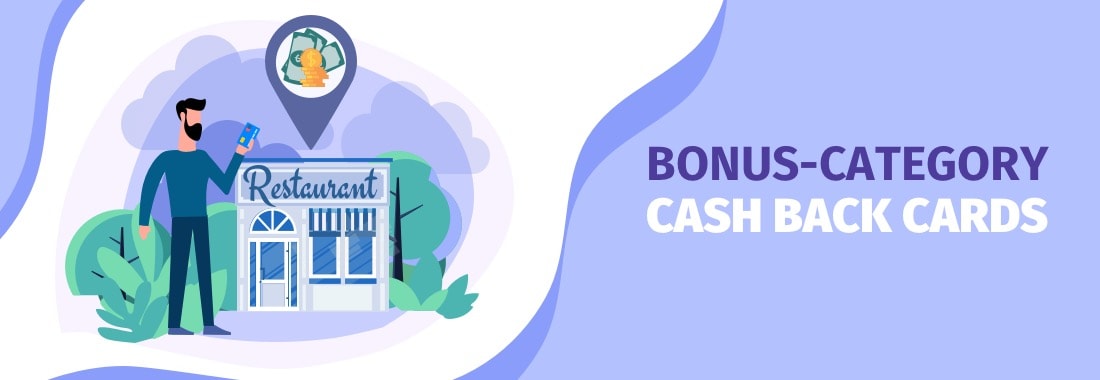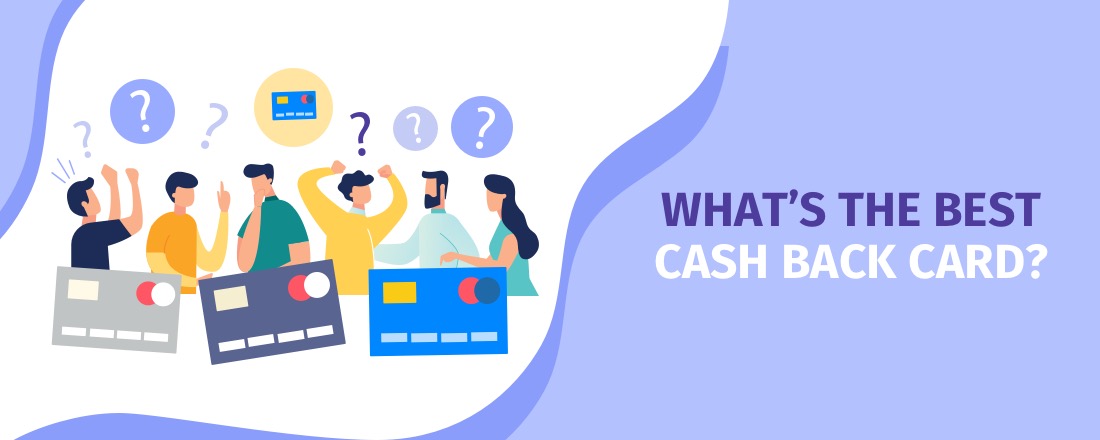
Cash back credit cards have become standard in the
So, here’s everything you need to know about how these cards work.
This article will cover
- How Cash back Credit Cards Work
- Different Types of Cash Back Credit Cards
- What’s the Best Cash Back Credit Card?
- Is there a Best Cash Back Card?
- How do I Claim my Cash Back?
- Cash Back Rewards Tips
How Cash Back Credit Cards Work
Let’s say you buy an airline ticket to fly to Europe on holiday, and it costs $700. If you put that expense on a credit card that offers 2%
Typically, your credit card company will pay the balance to you annually, though you will find some cards that pay you back monthly.
That money you accumulate will usually reduce your credit card balance when your credit card company releases the funds to you. In some instances, you can have the balance dump directly into your bank account, or you can convert the cash balance into
Note: You will NOT receive any cash back rewards for a
Different Types of Cash Back Credit Cards
Though all
Several types of cash back cards exist, and each has its own unique traits.
The three most common types of cash back cards are:
Flat-Rate Cash Back Cards
Just what it sounds like: You earn a flat rate on every dollar you spend. Today, that’s typically 1.5%, as with the Capital One Quicksilver card … though with the Citi Double Cash® Card you earn 2% (1% when you buy, and 1% when you pay). Neither card charges an annual fee.

The downside with a flat-rate card is that you have no opportunity to earn higher bonus rates that are now common among
Bonus-Category Cash Back Cards
These cards offer higher bonuses – typical 2% to as much as 6% – for spending in one or two particular categories, while offering a flat-rate for spending on everything else.
A good example is the American Express Blue Cash Preferred® card. You earn 6% cash back at U.S. supermarkets (up to $6,000 in grocery purchases each year; basically $500 a month), 6% cash back on select U.S. streaming subscriptions, and 3% at U.S. gas stations and on transit (taxis, rideshare, parking, tolls, trains, buses and more). On everything else, you earn a flat 1%.

The Capital One Savor Cash Rewards card, meanwhile, pays you 3% cash back on dining, entertainment, grocery stores, entertainment and popular streaming services, and 1% on everything else. Plus, it comes with a $200 sign-up bonus after you spend $500 in the first three months.
The point here is that if you know there are certain categories in which you regularly or frequently spend a sizeable amount, then a bonus-category card is probably a good choice for you.
It is especially true when you are loyal to one particular retailers and often shop there. Thus, Amazon loyal customers may get the most value from having the Prime Visa card that earns 5% back at Amazon.com, Amazon Fresh, Whole Foods Market and on Chase Travel purchases with an eligible Prime membership, 10% back or more on a rotating selection of items and categories on Amazon.com with an eligible Prime membership, unlimited 2% back at gas stations, restaurants, and on local transit and commuting (including rideshare), and unlimited 1% back on all other purchases. With all these benefits, the Prime Visa card has no annual fee.
Just be aware that the bonus rate might not apply to all of your purchases. As with the Blue Cash Preferred card mentioned above, you only earn the bonus rate on spending up to a certain amount each year.
Rotating Bonus-Category Cash Back Cards
These are very similar to the bonus-category cards I just mentioned. But instead of limiting your bonus opportunities to an unchanging one or two spending categories, the categories rotate, usually quarterly.
So, for instance, in one quarter you might get 5%

The thing is, you don’t choose the categories. Your credit card issuer does, and usually publicizes the categories – and the quarter in which they will be active – at the beginning of the year. And be aware that you might have to log into your account and activate the category each quarter.
The downside with such cards is that you might have no spending in certain categories. For instance, I live in a city with fabulous mass transit, so I have no need for a car, and, thus, no need for 5% cash back on gasoline purchases, since I never buy gas.
For that reason, a bonus-rate card tied to a particular category might make much more sense.
Among the rotating bonus-category cards, two of the best are:
- Discover it Cash Back offers 5% cash back, depending on the quarter, on purchases at
grocery stores, and Amazon.com. And it hasgas stations, restaurants no annual fee . - Chase Freedom (no longer available) is a new offering from Chase as of 2019. It offers 5% on various spending categories. For the first quarter of 2019, the category is “gas stations, tolls and drugstores.” Categories for upcoming quarters have not yet been announced. There’s also no annual fee.
- Chase Ink Business Cash offers 5% cash back on the first $25,000 spent in combined purchases at office-supply stores and for internet, cable and phone service each account anniversary year – good for business owners who want a solid, cash back
business credit card . It also comes with a $750 bonus cash back after spending $3,000 in the first three months; and a 2% cash back on the first $25,000 spent in combined purchases at gas stations and restaurants each account anniversary year.
What’s the Best Cash Back Credit Card?
Choosing which card is right for you is entirely a function of your spending, or a function of where you expect to begin spending in the near future.
So, for instance, if you know you are moving to the suburbs and will be buying a car for your new commute into the city, earning

If, on the other hand, you just want a simple rewards card that pays you a flat-rate regardless of where you spend, then that Citi Double Cash® Card paying you 2% on every purchase might make a lot of sense.
Or, if you are happy earning 1% with the opportunity to supersize your
Is there a Best Cash Back Card?
No.
Because everyone’s needs are different.
That said, here are some recommendations based on what might fit your spending patterns:
Dining : Capital One SavorOne Cash RewardsTravel: Wells Fargo Propel American Express Grocery stores: American Express Blue Cash Preferred Gas: American Express Blue Cash Preferred - Office supplies: Chase Ink Business Cash
- Flat-rate card: Citi Double Cash® Card
- Rotating bonus: Chase Freedom or Discover it
- Business cash back: Chase Ink Business Cash
How do I Claim my Cash Back?
As with everything, you have several options:
- Statement credit: This is, perhaps, the easiest. When your
credit card company releases your accumulated cash every year (or quarter) you can apply all or some of that money to repaying your existing credit card balance – dollar for dollar. - Paper check or direct deposit: Some card issuers allow you to redeem your cash rewards for a paper check that’s mailed to you. Or you can opt to have the cash deposited directly into your bank account.
- Redeem for gift cards: Depending on your issuer, you might also have the option to redeem your cash rewards for gift cards to various stores.
Cash Back Rewards Tips
1. Seek a sign-up bonus
Look for cards that offer a sign-up bonus, or be sure to ask your card provider if one is available.
2. Read the fine print
You want to know, for instance, if and how your card issuer can lower cash back amounts … or what you need to do to earn the sign-up bonus or if you must enroll in each quarterly bonus category.

3. Grab the biggest cash back you can
Generally speaking, get a card that offers the
4. Take advantage of yourself
Know your own spending habits and look for a
5. Pay your bills on time
Pay your credit card bill on time, even if it’s just the minimum payment. Depending on your card issuer, you can lose cash back rewards for late payments (another reason to read the fine print).
6. Know if your rewards expire
This isn’t common, but some cash back rewards can expire if not used or claimed within a certain period of time. (Once again, the fine print is your friend here).
Summary and a question
Just be sure you’re applying for the card that best meets your spending patterns, or that offers you the rewards that are best for your desires.
And remember: You will not get rewards for cash advances or
We want to know: Have you had any bad experiences with a cash back reward card?
Or where you disappointed in some way?
Let us know in the comments below!
